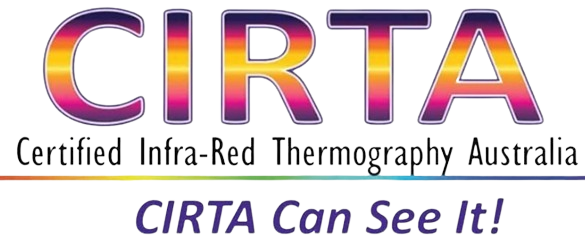Electrical system anomalies and failures, have cost businesses millions of dollars in losses with failed equipment & downtime, A thermal inspection can mitigate risks by detecting problems early & ensuring the electrical integrity of your infrastructure & workplace safety, with our team of experts with detecting anomalies in electrical systems to prevent failures. This reduces costs and increases the longevity of your assets.

The Importance of Thermal Scans for Electrical Switchboards
Understanding Electrical Thermal Scanning
What is Thermal scanning?
Electrical thermal scanning, also known as thermography or infrared imaging, is a vital non-destructive method for assessing the health of electrical systems. This innovative technique utilizes thermal cameras to capture temperature variations in components like cables, circuit breakers, and transformers. By analysing these heat patterns, CIRTA identifies potential issues before they escalate into serious problems such as fires or power outages.
Our team at CIRTA consists of qualified and certified thermographers adhering to the AS ISO 18436.7:2014 standards and committed to delivering high-quality thermal scanning services. Utilizing state-of-the-art technology, we can provide both still and video infrared imagery options, we provide thorough diagnostics and clear, actionable reports to ensure the safety and efficiency of your electrical systems.
The Case for Preventative Maintenance
Electrical systems operate quietly and continuously and at some point, they will fail, as we know nothing lasts for ever. Early detection is the key to longevity of your critical infrastructure and finding the malfunctioning components early, this can save you from costly repairs and significant downtime. Electrical failures can lead to long interruptions, impacting productivity in commercial and industrial environments.
Incorporating thermal imaging into your routine maintenance schedule is a prudent investment that is worth making, yielding substantial returns by preventing major issues.
Recommended Frequency for Thermal Scanning
How often should it be done we hear you ask?
Although there are no strict legal requirements for thermal scanning in Australia, it has become a best practice among businesses for preventive maintenance and insurance compliance. If your primary goal is to satisfy insurance requirements, it’s essential to consult your insurer about specific scanning intervals.
Typically, office buildings should undergo thermal scans every one to three years based on power loads. High-demand sectors, such as manufacturing, require annual inspections, while environments like mining sites may need even more frequent evaluations which can be3, 6 or 12 monthly, for best practice to fit into your preventative maintenance schedule.
Prioritizing Safety in Facilities
Safety is paramount for anyone managing public facilities. in Australia each year Faulty electrical equipment is the leading cause of these fires, accounting for 20% of incidents. Then take into consideration all the near misses that may have occurred and not reported to the insurance companies. So, with over 5,000 fire damage claims in commercial properties, the risks are significant, to your employees, your infrastructures your premises and the productivity of your business.
In the event of a catastrophic failure, what will the cost be to your business?
Proactive measures, such as regular thermal scans of electrical equipment, help detect faults early is the key, effectively reducing fire risks and ensuring a safer environment for everyone involved.
Meeting Insurance Requirements
While thermographic inspections are not legally required, many insurance companies now mandate regular thermal imaging of electrical systems. For instance, many insurance underwriters advise that scans must be performed exclusively by appropriate training and certification thermographer.
At CIRTA, all our technicians adhere to the standards set out by AINDT (Australian Institute of No Destructive Testing – recognised worldwide), are qualified trained and certified to AS ISO 18436.7:2014 certified and equipped with the latest technology electrical thermographic equipment, that can perform the diagnostic service and correctly interpret the results and our inspections include a detailed insurance-compliant report, ensuring that you meet all necessary requirements while prioritizing safety and reliability.
